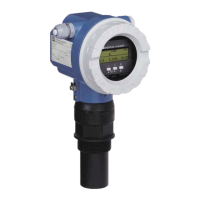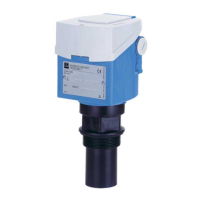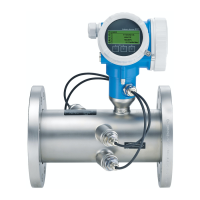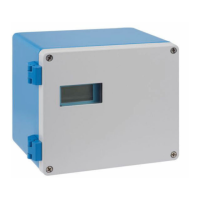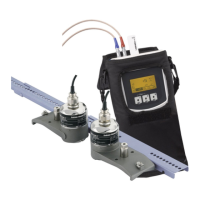Proservo NMS80/81/83
Endress+Hauser 9
• Valid firmware version: as of 01.02.zz (→ nameplate of the device)
• Valid hardware version (electronics): as of date of production 23.11.2016 (→ nameplate of the
device)
SIL label on the nameplate
SIL certified devices are marked with the following symbol on the nameplate:
Safety function
Definition of the safety
function
The device's safety functions are:
Safety function 1 (level measurement)
• Maximum point level monitoring (overfill protection)
• Minimum point level monitoring (dry run protection)
• Level range monitoring
The safety functions comprise the measurement of the level of a liquid.
Safety function 2 (current input measurement)
Current input monitoring
The safety function comprises the measurement of the current of a connected device.
Safety-related signal
Digital
The device's safety-related signal is the closed relay contact of the digital output. All safety measures
refer to this signal exclusively.
The level value (safety function 1: level measurement) or the analog input current (safety function 2:
current input measurement) are correctly converted to a digital output value. The relay contact is
closed within the range of validity, and is open outside this range.
The safety-related output signal is fed to a downstream logic unit, e.g. a programmable logic
controller or a limit signal transmitter where it is monitored for the following:
• Exceed and/or undershoot a specific level limit.
• The occurrence of a fault, e.g. contact open (interruption of the signal line).
In case of fault it must be ensured that the equipment under control achieves or maintains a
safe state.
Analog
The device's safety-related signal is the analog output signal 4 to 20 mA. All safety measures refer to
this signal exclusively.
The device can also communicate via HART for information purposes and contains all the HART
features with additional device information.
The safety-related output signal is fed to a downstream logic unit, e.g. a programmable logic
controller or a limit signal transmitter where it is monitored for the following:
• Exceed and/or undershoot a specific level limit.
• The occurrence of a fault, e.g. error current (≤3.6 mA, ≥21.0 mA), interruption or short-circuit of
the signal line).
In case of fault it must be ensured that the equipment under control achieves or maintains a
safe state.
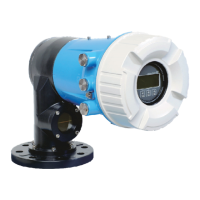
